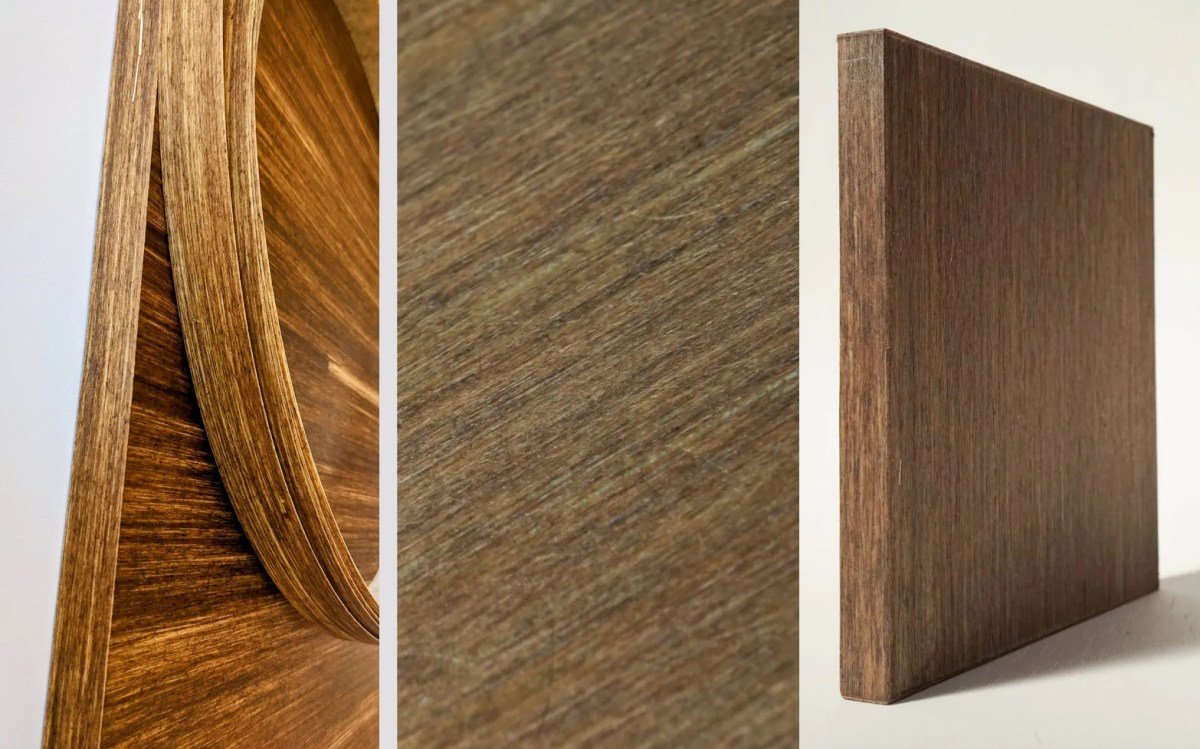In today’s world, even niche industries are embracing eco-friendliness and sustainability, with a newfound concern for the environment. From the waste of washing machines to the production of artificial materials like wool, organizations are seeking greener alternatives. In this quest, Lingrove is leading the charge by offering a carbon-negative option for an unexpected area – laminates.
“…thin layers of wood and other materials…” – these laminates are ubiquitous in everyday life, seen in cars, homes, and various appliances. They are often placed on top of a molded or printed body, adding a decorative touch. However, their sourcing and manufacturing processes are not always environmentally friendly.
Lingrove has introduced “ekoa” – a wood veneer alternative made from flax fiber and plant-based resins. This innovative material is not only carbon-negative but also boasts exceptional qualities like high stiffness, durability, and resistance to touch, temperature, and external factors (like coffee spills). And yes, it is spelled with a lowercase “e.”
The company has recently secured a new round of funding worth $10 million, with investors like Lewis & Clark Agrifood, Diamond Edge Ventures, Bunge Ventures, and SOSV. Their goal is to make inroads in the automotive industry and other interior surfaces, where there is a high demand for sustainable alternatives.
“…many of those byproducts are still emitting VOCs [volatile organic compounds]…and they are not able to be made into high-performing materials.” – Lingrove’s CEO, Joe Luttwak, explains the limitations of using recycled plastic and other repurposed materials for cabinetry and trim. While they may be environmentally friendly, they often compromise on appearance, hardness, and can offgas harmful chemicals. In contrast, ekoa offers a healthy-air, low-carbon, high-performing, and beautiful solution.
Ekoa materials exhibit ideal performance, do not release any unwanted gases into indoor spaces, and have the visual appeal of natural wood. They can also be customized in terms of color and opacity, making them ideal for a wide range of applications. And unlike artificial laminates, they are carbon-negative and can be recycled at the end of their lifespan.
But why not simply use actual wood instead? After all, there is already an abundance of waste wood and scraps in industrial processes. According to Luttwak, structural materials like sawdust and wood chips are not suitable for decorative purposes. They may be used for the core of a board, but their unattractive appearance and lack of resistance to substances like solvents and oils make them unsuitable for exteriors.
Lingrove’s decision to focus on veneers may not be the most flashy or prominent business move, but it is a necessary one. It is always encouraging to see innovation in underappreciated areas of industries, as successful alternatives can lead to millions of products becoming less wasteful. With their recent investment, Lingrove aims to shift from small-scale production to meeting preorders and expanding into the automotive world.








